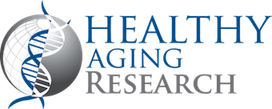
Healthy Aging Research
Open Access
ISSN: 2261-7434

ISSN: 2261-7434
Commentary - (2023)Volume 12, Issue 2
Hematopoietic Stem Cells (HSCs) are a vital component of the human body's hematopoietic system, responsible for the continuous production of blood cells throughout an individual's lifetime. However, as individuals age, the functionality of these stem cells undergoes significant changes, leading to a decline in their regenerative capacity and an increased susceptibility to various diseases. This phenomenon, known as hematopoietic stem cell aging, has garnered considerable attention in the field of aging research due to its implications for human health.
Mechanisms of hematopoietic stem cell aging
Hematopoietic stem cell aging is a complex process influenced by various intrinsic and extrinsic factors. One of the primary factors contributing to HSC aging is the accumulation of DNA damage over time. As cells divide, errors can occur during DNA replication, leading to mutations and genetic instability. This DNA damage can result from oxidative stress, exposure to environmental toxins, or simply from the intrinsic instability of the DNA replication machinery. Over time, the cumulative burden of DNA damage impairs the self-renewal and differentiation capacity of HSCs, ultimately leading to a decline in their regenerative potential.
Another crucial aspect of HSC aging is alterations in the bone marrow microenvironment, also known as the stem cell niche. The niche provides the necessary support and signals for HSC maintenance and function. However, with age, the composition and functionality of the niche undergo changes, which can negatively impact HSCs. For instance, age-related changes in the production of various signaling molecules, such as cytokines and growth factors, can disrupt the delicate balance of HSC selfrenewal and differentiation, impairing their regenerative capacity.
Telomere shortening is yet another key mechanism implicated in HSC aging. Telomeres are protective caps located at the ends of chromosomes, consisting of repetitive DNA sequences. With each cell division, telomeres progressively shorten, eventually reaching a critical length. At this point, cells enter a state of replicative senescence or undergo apoptosis to prevent genomic instability. HSCs are no exception to this process, and as they age, their telomeres shorten, limiting their proliferative potential and overall regenerative capacity.
Consequences of hematopoietic stem cell aging
The decline in HSC function associated with aging has profound implications for human health. One significant consequence is the compromised immune system observed in older individuals. Aging HSCs exhibit reduced production of immune cells, such as lymphocytes, leading to impaired immune responses.
This decline in immune function contributes to increased susceptibility to infections, reduced vaccine efficacy, and a higher incidence of certain cancers in the elderly population.
Moreover, age-related HSC dysfunction plays a crucial role in the pathogenesis of hematological disorders, such as Myelodysplastic Syndromes (MDS) and acute Myeloid Leukemia (AML).
Dysregulated HSCs can acquire genetic mutations or epigenetic alterations that disrupt normal hematopoiesis and drive the development of these malignancies. Furthermore, the impaired regenerative capacity of aged HSCs can contribute to the accumulation of damaged or dysfunctional blood cells, leading to anemia, thrombocytopenia, and other hematological abnormalities commonly observed in the elderly.
Strategies to counteract hematopoietic stem cell aging
Pharmacological interventions: Certain drugs, such as small molecule inhibitors and growth factors, have shown promise in rejuvenating aged HSCs. These compounds target specific signaling pathways and molecular mechanisms associated with HSC aging, promoting their self-renewal and differentiation potential.
Genetic manipulation: Genetic engineering techniques can be used to modify HSCs and reverse age-related changes. For example, the introduction of specific genes or microRNAs can restore youthful characteristics to aged HSCs and improve their regenerative capacity.
Young cell transplantation: Infusing young HSCs into aged individuals has been explored as a potential strategy to rejuvenate the blood system. This approach replenishes the aged HSC pool with young, functional cells, thereby enhancing overall hematopoietic function.
Caloric restriction and exercise: Lifestyle interventions, such as caloric restriction and regular physical exercise, have been shown to have beneficial effects on HSC aging. These interventions promote a more youthful HSC phenotype and improve their regenerative potential.
Immunomodulation: Aging is associated with chronic inflammation, which negatively impacts HSC function. Modulating the immune system through immunotherapies or anti-inflammatory agents can help mitigate the effects of inflammation on HSC aging.
Citation: Gagesch M (2023) Hematopoietic Stem Cell Aging: Implications for Human Health. Healthy Aging Res.12:161
Received: 22-May-2023, Manuscript No. HAR-23-24517; Editor assigned: 25-May-2023, Pre QC No. HAR-23-24517 (PQ); Reviewed: 09-Jun-2023, QC No. HAR-23-24517; Revised: 16-Jun-2023, Manuscript No. HAR-23-24517 (R); Published: 23-Jun-2023 , DOI: 10.35248/2261-7434.23.12.161
Copyright: © 2023 Gagesch M. This is an open-access article distributed under the terms of the Creative Commons Attribution License, which permits unrestricted use, distribution, and reproduction in any medium, provided the original author and source are credited.